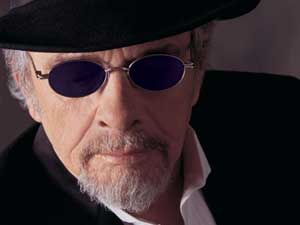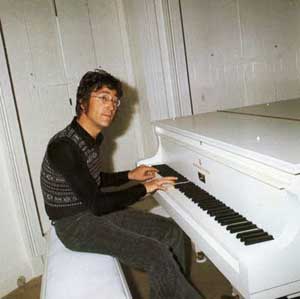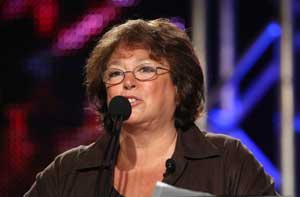[Bianculli here: Wednesday night at 9 ET, most PBS stations are presenting the latest American Masters documentary, a profile of veteran country artist Merle Haggard. He's survived for decades despite the fickle currents of pop culture -- but so has American Masters itself. Contributing writer Tom Brinkmoeller tracked down the show's persistent and perceptive executive producer, Susan Lacy, to learn how...]
"American Masters" Wrote, and Owns, the Book on Video Biography

Since she came up with the idea of creating a video compendium of American culture 26 years ago, Susan Lacy has lived to make that dream fly. It's one that almost was grounded early.
In 1984, when she presented to PBS her idea for what would become American Masters, the decision-makers weren't ready to open either the network's wallet, or its doors to prime time, for her. There was no American model for what she was proposing, Lacy explained in a recent interview.
She wanted to start building a library of complete and compelling histories of creative giants that would be available for a long time after those giants were gone. Nothing close to her idea had ever been shown on PBS. She was competing for schedule space with such already-established hits as Nova, Masterpiece Theatre and Great Performances, as well some then-popular series like Newton's Apple and Matinee at the Bijou. Winning over enough supporters wasn't a quick process.
"I refused to believe it wasn't going to happen," Lacy, the series' executive producer, said.

Determination made this gem of an idea a reality. Merle Haggard: Learning to Live with Myself (July 21 at 9 ET on PBS; check local listings) marks the midpoint of American Masters' 24th season. Like the more than 160 profiles that preceded it, the hour presents a story of unique creativity, and one doesn't have to be deeply involved in the showcased field (in this case, country music) to get wrapped up in the story it tells. Whether Haggard is a known or an unknown in your mind, odds are favorable you'll know, and care, a lot more by the end of the program.
(If your local station isn't showing the Haggard program, PBS is making it available, temporarily, after the national broadcast. So beginning Wednesday, you can watch it on the American Masters website by clicking HERE.)
This kind of commitment is what distinguishes American Masters from A&E's Biography, Food Network's Chefography and most other similar bio-history projects. A number of factors make it singular.
Lacy's original vision, perfectly targeted, hasn't changed. The subjects always have been ones that have made a lasting difference in the cultural picture, versus people who burn brightly for a short time. Spots aren't auctioned as part of a marketing effort to push a movie opening, book release, concert tour or any other commercial event. And, most important, Lacy has held tightly to the belief that high-quality works only can be produced when the producers have full editorial control.
Without that control, a project won't be made, she said. And some stories she really wants to do have been held up for this reason. Lacy won't list them, because she says she remains "eternally optimistic" that the control eventually may be given -- as it was by Bob Dylan, whose 2005 American Masters profile, No Direction Home, won Peabody, Emmy and Grammy awards.
(A list, albeit an incomplete one, of the series' many profiles is posted on PBS' website, and can be found HERE.)

The schedule for the remainder of the current season is tantalizing: musician Israel "Cachao" Lopez (September); filmmaker Elia Kazan (October); Beatle John Lennon (November) and pianist Glenn Gould (December).
American Masters' silver-anniversary season isn't finalized yet, but Lacy said it will include actor Jeff Bridges and the Bridges family legacy; a profile of the "troubadour singer-songwriters of the 1960s and '70s," such as Carole King and James Taylor; naturalist John Muir; choreographer Bill T. Jones; and producer-director-impresario Joseph Papp.
Earlier this year, when Lacy accepted a CINE Lifetime Achievement Award, she told the audience that in the early days she just hoped the series might build enough support to win a second season on the air. "Who ever thought we'd become an institution?"

Her dream, now 25 years old, still isn't complete. Lacy said she always has envisioned the library of American Masters programs as an accessible record of American culture. In the hands of academics, she said, it could be turned into an extraordinary course in this country's cultural history.
That dream is an expensive one, and as a result less than 20 episodes can be purchased at present. Costs to purchase the rights to content of all of those programs is enormous, and in-perpetuity rights are even more expensive, she said.
Finding the funding to just keep the production going always has been a large task, Lacy said. Raising money to buy the rights was mostly too daunting to tackle. Somewhere, she believes, the funding finally will develop to make it possible to open the fabulous American Masters vault and give more people a look at the exceptional treasures inside.
Meanwhile, watch, and appreciate them, as they're televised.